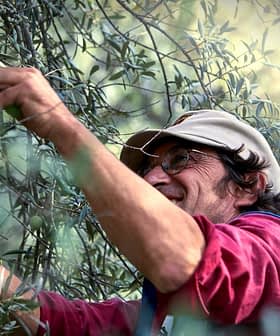Oleotourism in Italy is attracting so much interest that it has been included in the country’s budget for 2020.
According to the new law, from January 1, the provisions that regulate the wine tourism sector “are extended to olive oil tourism activities” and defined the term ‘oleotourism’ as all activities carried out during the olive tree cultivation, harvesting and oil production processes; the tasting and marketing of olive oil products; and all activities meant to be recreational and informative at olive mills and groves.
Olive oil is not only an element which connotes a territory, but it becomes a potential tourist attraction in light of a growing interest, demonstrated by the success of events like the Walk Through the Olives Trees.
The latest figures, presented at the twenty-fifth anniversary of the National Association of Olive Oil Cities, show a strong potential for growth in the sector.
“Olive oil themed experiences are gaining relevance within the context of tourism,” Roberta Garibaldi, a professor of tourism management at the University of Bergamo, said. “Olive oil is not only an element which connotes a territory, but it becomes a potential tourist attraction in light of a growing interest, demonstrated by the success of events like the Walk Through the Olives Trees.”
See Also:Oleotourism NewsIn her report “the tourist valorization of olive oil,” Garibaldi said that tourists are interested in visiting farms and purchasing products as well as in taking an active part in production activities, with 61 percent of people surveyed keen to participate in the olive harvest and produce their own extra virgin olive oil.
Forty-one percent of those surveyed by Garibaldi also said that they are interested in artistic activities in the olive groves. Meanwhile, 64 percent said that they are interested in learning about the company and territory in which it operates. A further 57 percent said they are interested in meeting and interacting directly with the owner.
Olive oil tasting is also an element of great attraction, with 79 percent of those interviewed stating that they would like to combine the oils with local food. Another 69 percent reported that they would like to participate in immersive culinary experiences in the olive groves.
A strong appreciation is expressed towards historic mills and ancient olive trees, with 70 and 76 percent of those surveyed, respectively, interested in visiting the sites and learning more about them.
Moreover, a large portion of Italian tourists would like to taste different types of extra virgin olive oil, and, at the restaurant, they would like to find an olive oil list paired with the menu; on this, an explanation by the staff would be welcomed.
“These findings raise the possibility to build broader, segmented offerings capable of stimulating the curiosity and active participation of the olive oil tourists,” Garibaldi said. “It becomes essential to train operators in order to satisfy all these aspects.”








